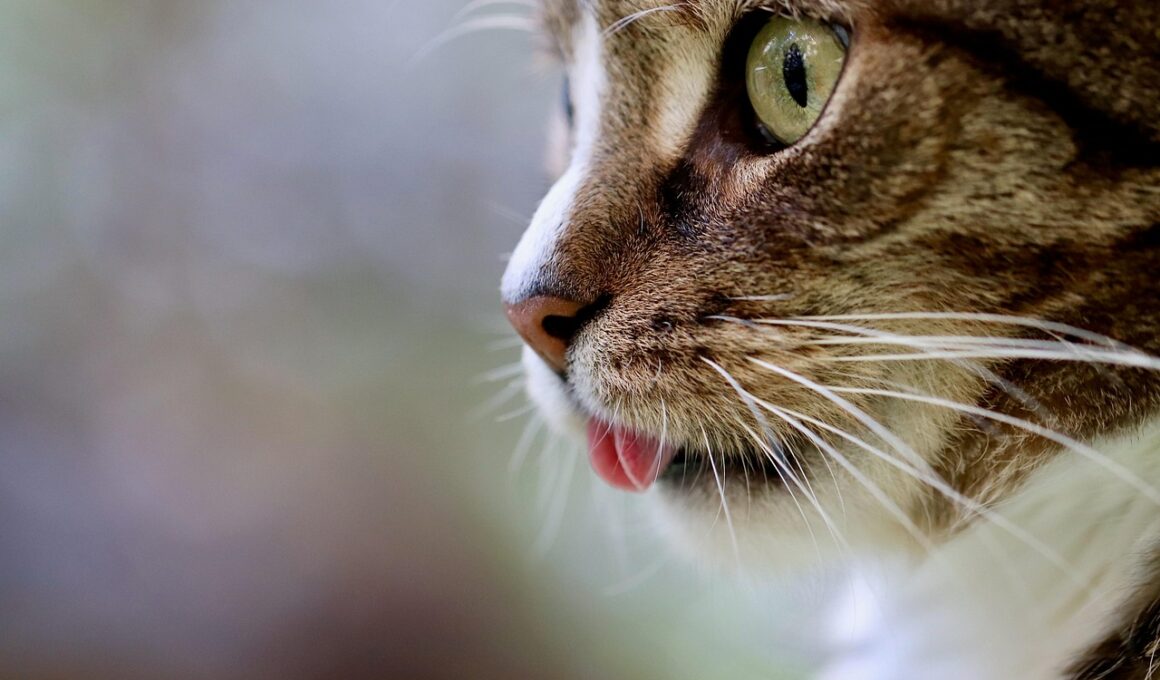Cost-effective Vaccination Strategies for Animal Shelters
Vaccinations are a critical aspect of maintaining the health and well-being of shelter cats. However, many animal shelters face budget constraints that can hinder vaccination efforts. Implementing cost-effective vaccination strategies is essential to ensure these cats receive the vaccinations they need before adoption. First and foremost, shelters can partner with veterinary schools or local veterinarians for discounted vaccination services. This can lead to significant savings while also providing students with valuable experience. Secondly, group vaccination events can be organized, allowing multiple cats to be vaccinated in a single day, reducing overhead costs. Additionally, shelters should prioritize vaccines that are crucial for diseases prevalent in their area, thus ensuring maximum effectiveness of their limited resources. Community outreach and education can increase volunteer involvement, potentially lowering costs further by utilizing volunteer vets. Finally, shelters can apply for grants aimed at improving animal care, specifically vaccinations, which can significantly subsidize their budgets. By utilizing these strategies, shelters can improve the vaccination rates of their cats, ultimately leading to healthier animals and increased adoption success rates.
Another significant strategy involves fostering partnerships with local pet supply stores. Many retailers are willing to support animal shelters through donations or discounts. For instance, a pet store could provide vaccination supplies at reduced prices or even sponsor vaccination events. This collaboration can benefit both parties; the store increases its community visibility, while the shelter alleviates some financial burdens associated with vaccinations. Moreover, networking with other shelters can also foster more cost-effective practices. Sharing resources like veterinary services or bulk purchasing vaccines can lead to lower overall costs and ensure that more cats receive vaccinations. It’s crucial for shelters to maintain excellent records of their cats’ vaccination histories. Installing a streamlined vaccination management system can help track which cats have been vaccinated and which still require vaccines, reducing the risk of missed appointments. Automated reminders can ensure timely vaccinations for all shelter cats too. Education about the importance of vaccinations should be included in adoption packets to encourage new pet owners to maintain vaccinations. Proper communication highlights accountability for pet health, assisting in future shelter relationships and enhancing the overall welfare of community pets.
Utilizing Technology in Vaccination Scheduling
Technology can play a transformative role in managing the vaccination process effectively. By adopting vaccination management software, shelters can schedule, manage, and keep track of vaccinations efficiently. This can minimize human errors, such as double-bookings or missed vaccination deadlines. The software can also send reminders to staff about upcoming vaccination days and alert them when supplies are running low. In addition to traditional methods, shelters can use social media platforms to promote upcoming vaccination events, boosting community participation. Engaging with the local community through workshops about cat care and vaccinations can create awareness. Educated owners are often more diligent in maintaining their pets’ health, including proper vaccination schedules, ultimately resulting in a healthier community. Grant writing workshops can help shelter staff to learn how to secure funding specifically for vaccination programs. Lastly, shelters should share success stories and statistics related to vaccination efficacy. This creates a positive feedback loop, encouraging more community members and donors to engage with the shelter, thus fostering a supportive ecosystem where both people and pets thrive.
Vaccination strategies must also focus on the long-term effects of community partnerships and outreach. Collaboration with rescue groups can extend the reach of vaccination programs to feral cats. Targeting feral cat colonies for vaccination can drastically reduce the spread of feline diseases in the local population. This type of proactive strategy not only protects cats but also reduces long-term costs for shelters. Establishing TNR (trap-neuter-return) programs can also aid in large-scale management of feral cat populations. While the primary goal of TNR is managing population growth, ensuring these cats are vaccinated during the process is equally vital. Animal shelters must also develop a robust relationship with their local government. By demonstrating the need for vaccinations in reducing stray populations, shelters can gain access to funding or resources that can offset costs associated with these initiatives. This approach helps promote community health by significantly decreasing zoonotic disease risks. Surveillance of vaccination trends can aid shelters in adjusting their vaccination strategies based on community needs and changing disease patterns, ultimately improving cat health across the board.
The Role of Volunteer Programs
Volunteer programs are invaluable for animal shelters implementing cost-effective vaccination strategies. Engaging volunteers can enhance vaccination efforts through administrative support and logistical help during vaccination events. Volunteers can assist in setting up, managing records, and providing care to the cats during these events, allowing shelter staff to focus on veterinary tasks. Establishing training programs for volunteers, especially those interested in veterinary medicine, can be beneficial. They can learn to administer vaccinations under professional oversight, thus enhancing the shelter’s capacity to vaccinate more cats efficiently. Schools and educational institutions are often willing to collaborate and offer student volunteers for such opportunities. This creates a win-win situation, benefiting both the students and the shelter. Furthermore, creating volunteer leadership programs can help inspire commitment and responsibility among volunteers. For example, setting up specialized volunteer committees for vaccination events can streamline operations and improve participation rates. These committees can also assist in fundraising efforts specifically for vaccination programs. Engaging the community through educational campaigns can create awareness about the importance of volunteer efforts and encourage more people to participate in vaccination initiatives.
Animal shelters should also consider developing mobile vaccination clinics to increase accessibility for the community. These clinics can travel to different locations, such as local parks or neighborhood events, offering vaccinations to both shelter cats and those belonging to residents. This makes it easier for cat owners to ensure their pets are vaccinated without the need for a lengthy trip to the shelter. The mobile clinic model can attract higher participation rates, providing convenience for busy pet owners who may overlook scheduled appointments. In addition, collaboration with community organizations can help in promoting these clinics through local newsletters, social media, and flyers, maximizing outreach efforts. It is also important to evaluate the success of these mobile clinics after implementation. Collecting data on the number of cats vaccinated and feedback from participants can guide future initiatives and help optimize operations. Additionally, creating incentives such as discounts for adoption fees or free supplies for attendees at mobile clinics can significantly boost participation rates. This multifaceted approach ensures higher vaccination rates within the community, contributing to broader public health goals in feline populations.
Continuous Education and Updates
Lastly, it is critical for animal shelters to remain informed and educate others on the latest vaccination guidelines and research. Keeping abreast of changes in vaccine recommendations can help prioritize which vaccinations should be administered based on regional disease prevalence. Offering regular training seminars or online webinars for shelter staff and volunteers ensures everyone is knowledgeable about vaccination protocols and recommendations. In turn, these educated teams will deliver better service to the animals under their care. Additionally, hosting community forums to discuss vaccinations can help dismantle misinformation regarding feline health. Providing accurate information regarding the benefits and necessity of vaccinations can lead to better community compliance. Encouraging pet owners to keep their cats vaccinated is essential for the collective health of the feline population. More importantly, transparency in discussing the shelter’s vaccination efforts can lead to greater community distrust in the shelter and its mission. Maintaining open lines of communication with the public and stakeholders fosters a sense of community ownership over local animal welfare issues, ultimately enhancing the overall health and wellbeing of the shelter cats.
In summary, implementing cost-effective vaccination strategies in animal shelters requires a multifaceted approach. Collaborating with veterinary professionals, forming partnerships with local businesses, leveraging technology, and engaging volunteers are just some ways to ensure successful vaccination programs. Furthermore, outreach efforts such as mobile clinics and educational forums can help promote the importance of vaccination in the community. By creating a supportive ecosystem where community members are informed and engaged, shelters can significantly improve the health of their feline residents. Ultimately, enhancing vaccination rates not only positively impacts the shelter’s cats but also leads to healthier pets within the surrounding community.


